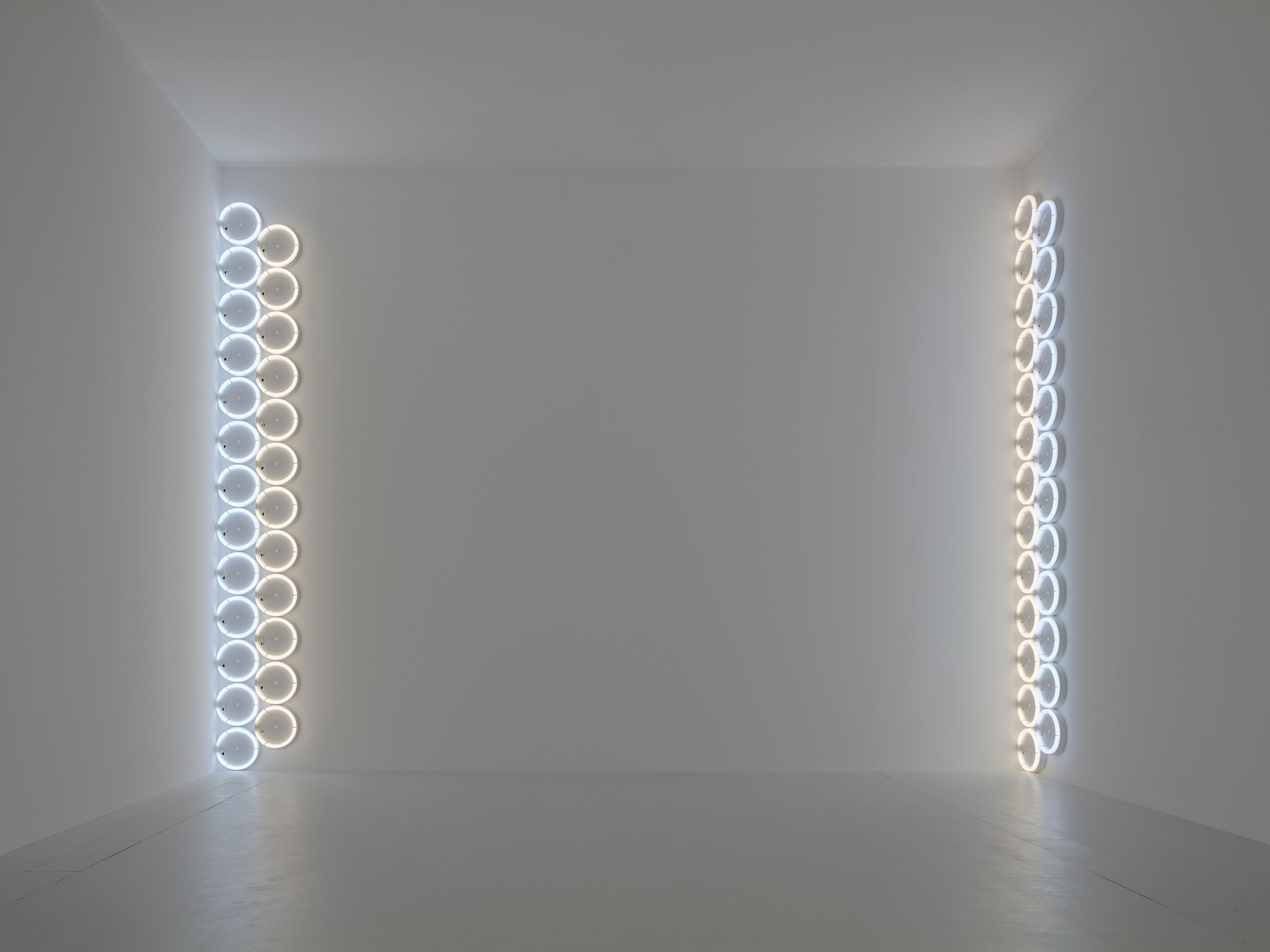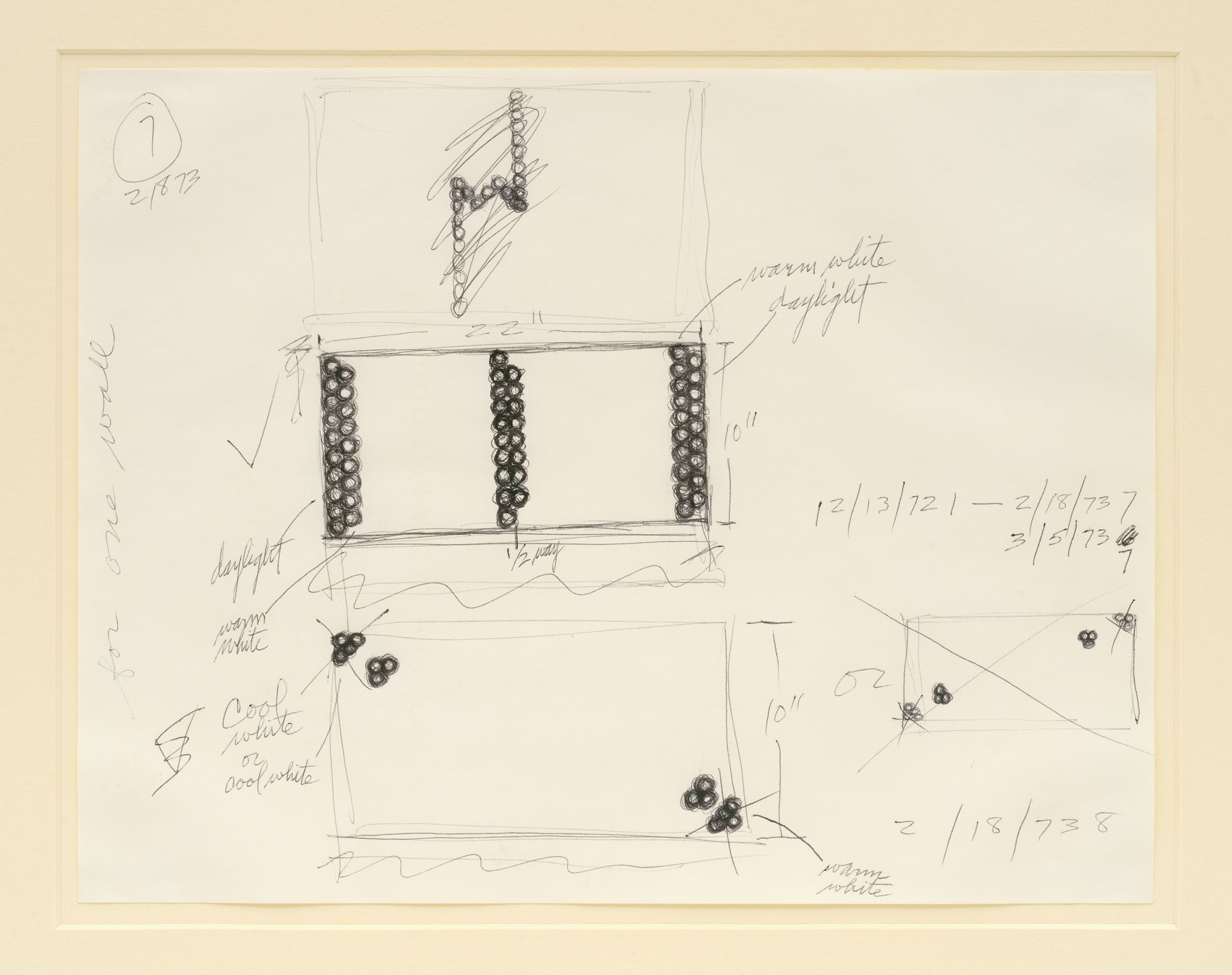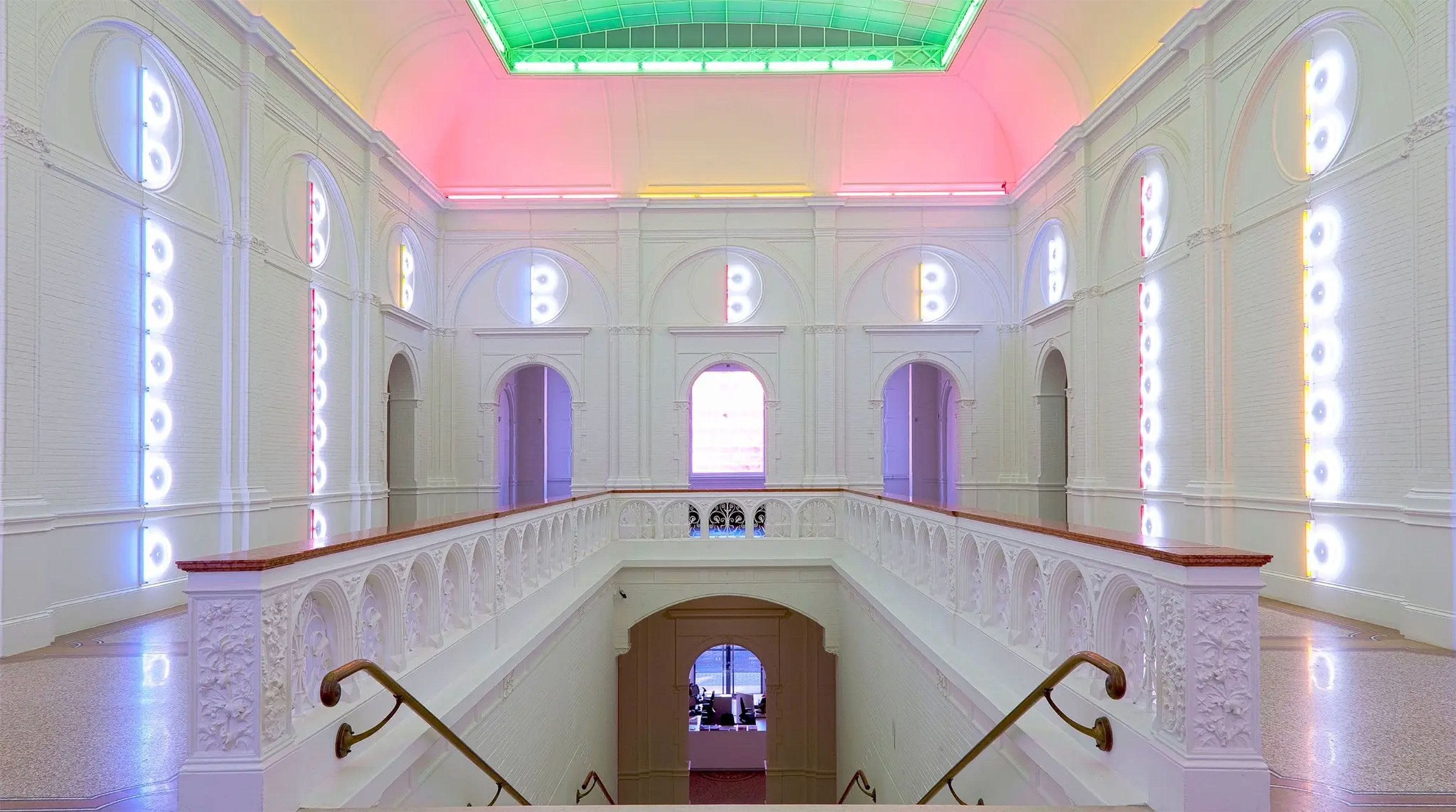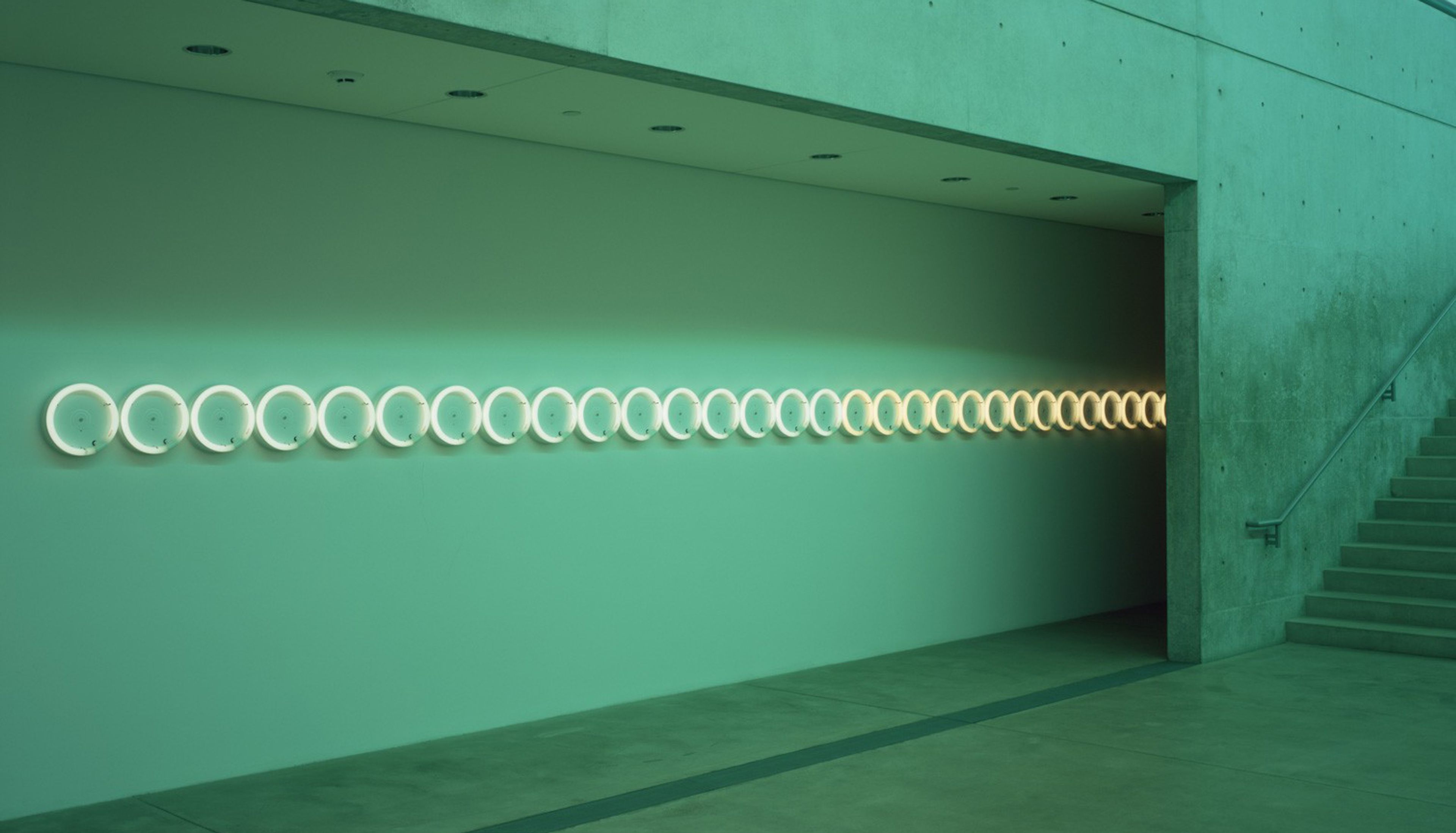Exceptional Works: Dan Flavin
untitled (to Tina and Christoph and their Palladio), 1972-1973
cool white and warm white circular fluorescent light Four cornered sections, heights variable


Dan Flavin, April 30, 1966. Photo by Fred W. McDarrah/MUUS Collection via Getty Images

Installation view, Dan Flavin: three installations in fluorescent light, Kunsthalle Köln, Cologne, 1973.

Christoph Sattler, Wohnhaus Jürgen Habermas, Starnberg, Germany, 1971–1972, (left); Dan Flavin, for the second floor room, Kunsthalle, Cologne, 1972 (right)

Installation view, some cornered installations in fluorescent light from Dan Flavin to celebrate ten years of the Albright-Knox Art Gallery, Albright-Knox Art Gallery, Buffalo, New York, 1973
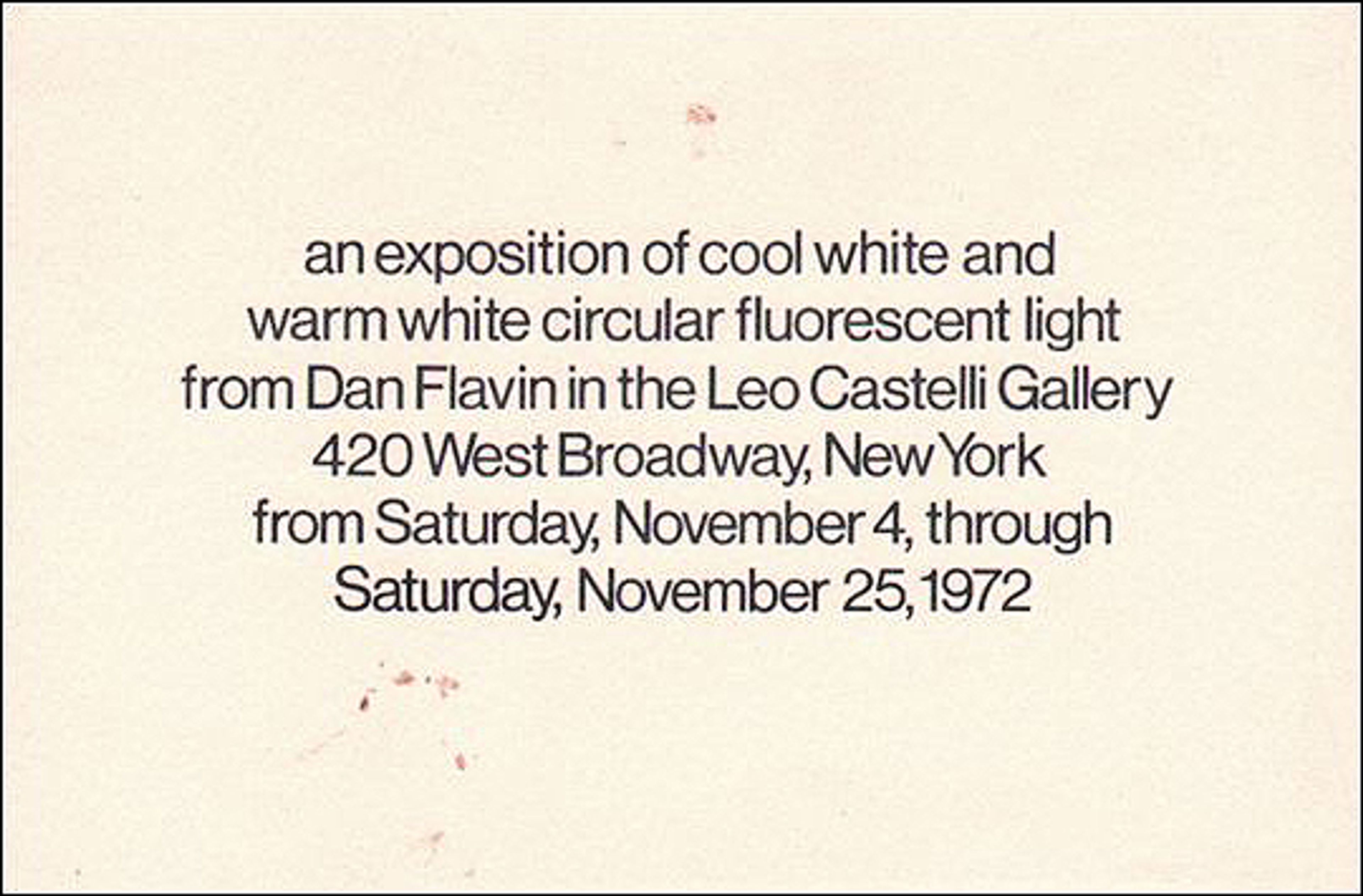
Exhibition card for an exposition of cool white and warm white circular fluorescent light from Dan Flavin, Leo Castelli Gallery, New York, 1972
Flavin explored different combinations of whites in other circular installations from this period, for example the 1972 works untitled (to Seymour Knox and Gordon Smith), shown at the Albright-Knox Art Gallery, Buffalo, New York, in 1973, and untitled (to Debbie Hay, moving anyway), shown at the Fort Worth Art Museum in 1975.
Related works are held in international collections including the Stedelijk Art Museum, Amsterdam, where a major installation of circular fixtures was installed in 2012, and Dia Art Foundation, New York.
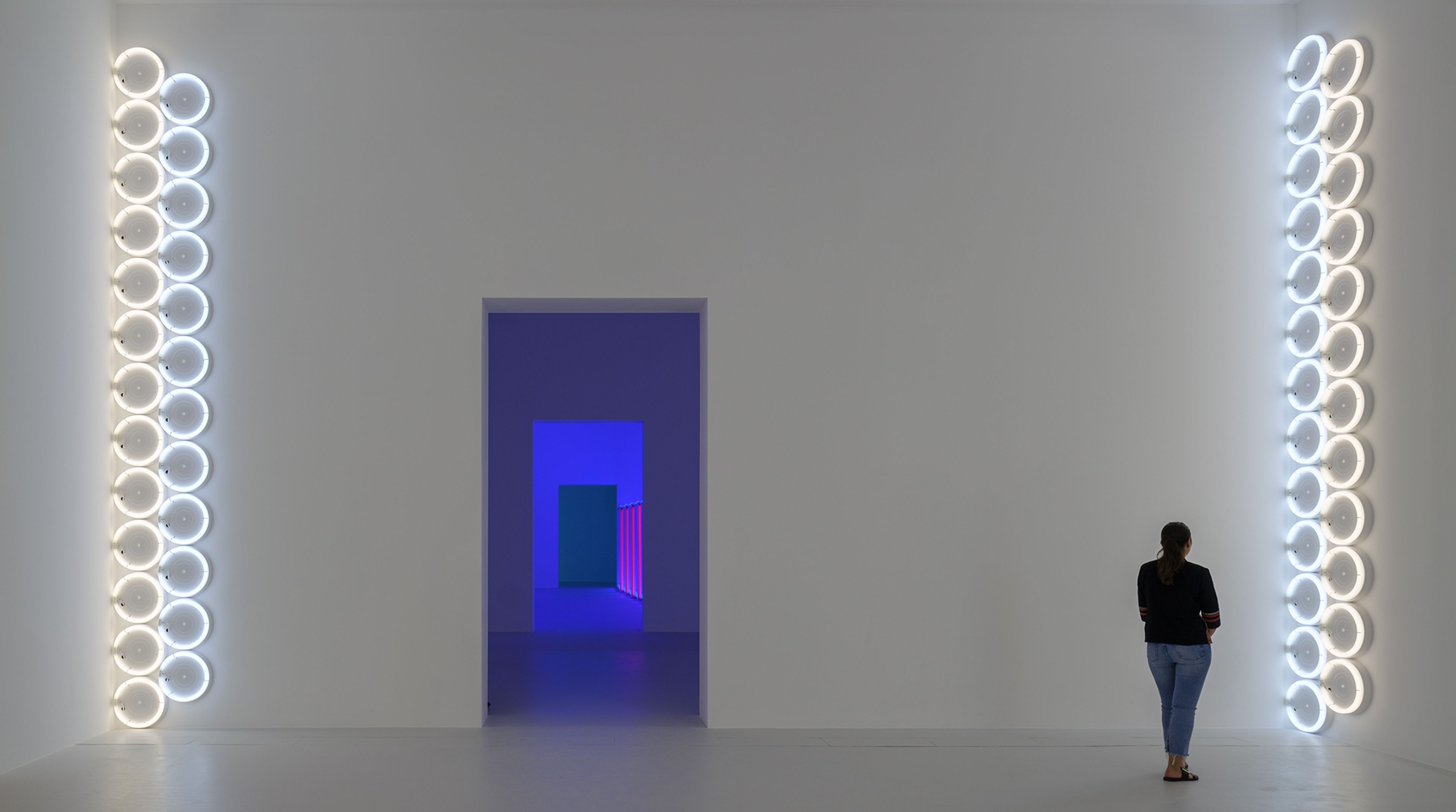

David Zwirner at Art Basel Unlimited
